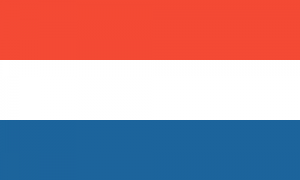By Sarah-Claire Jordan
 Not to be confused with the German word for German, “Deutsch”, Dutch is the official language of the Netherlands. It is also spoken in parts of Belgium and France as well as in a handful of other countries like Suriname, that was once a Dutch colony. The language tends to get overlooked, as there are some much more influential countries right next door with languages that are more widely spoken. However, Dutch has a lot more to offer than it may seem.
Not to be confused with the German word for German, “Deutsch”, Dutch is the official language of the Netherlands. It is also spoken in parts of Belgium and France as well as in a handful of other countries like Suriname, that was once a Dutch colony. The language tends to get overlooked, as there are some much more influential countries right next door with languages that are more widely spoken. However, Dutch has a lot more to offer than it may seem.
Dutch is spoken today by more than 21 million people all over the world, and is the 30th most widely-spoken language in the world. In order to shed a bit more light onto it, here are a few things you may not have known about Dutch:
1. The Dutch-speaking region of Europe isn’t clearly defined
Dutch is spoken in the Netherlands, but it is also spoken in parts of Belgium. The issue is many people don’t realize it because the dialects of Belgium are referred to as “Flemish”, but they are definitely part of the same dialect group as the Dutch of the Netherlands. At least one dialect of Flemish is also spoken in parts of French Flanders. The reason that the borders of this linguistic region aren’t clear is due to the politics of calling any Dutch dialect or variety spoken outside of the Netherlands “Flemish”, when they are really the same language
2. Dutch is spoken in South America and the Caribbean
Suriname is the country outside of Europe with the highest concentration of Dutch speakers, which makes sense since it used to be a Dutch colony. More than half of the citizens of Suriname speak Dutch as their native language, and it is the language of business, education, and the government and media there. Of course, the Dutch spoken in Suriname is not exactly the same as that spoken in Europe. In the Caribbean, you can find some Dutch spoken in Aruba, Sint Maarten, and Curaçao, but only about 7% of the population speak it as their first language.
3. Afrikaans developed from Dutch
The Dutch had a strong presence in what is now South Africa, starting when they started to explore the area in the 1600s and later settled there. However, it is considered a daughter language of Dutch rather than a dialect. This is because it evolved from a 17th century dialect of Dutch from South Holland, and didn’t have modern Dutch as an influence later on. This allowed Afrikaans to become its own language, incorporating some words from other languages spoken there. Still at least 90% of Afrikaans vocabulary comes from Dutch originally.
4. A Dutch phonological trend began in the 1970s and continues today
This trend is known as Polder Dutch, and involves lowering some of the common diphthongs found in Dutch. This could all be part of a bigger vowel shift that is taking place in Dutch, much like the Great Vowel Shift in English. This pronunciation is mostly found in Utrecht, South Holland, and North Holland.
For an overview of our translation expertise, visit our website translation and localization page.



